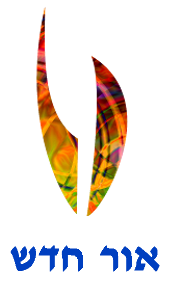By Rabbi Edwin Goldberg
Part Two: Chevruta (Intense Text Study) With A Thousand People
Last week I wrote about the decision of the Machzor editors to break the shofar service into three parts, with each part appearing in a different section of the service. As I mentioned, the three parts of the shofar service carry different themes: God’s sovereignty, God’s remembrance of us, and God’s redeeming us. When these three themes are presented one after the other, especially towards the end of the Rosh Hashanah morning service, it is hard to reflect on the spiritual depth of these insights. By dividing the shofar service into three, more attention on each section is possible.
For example, let’s consider the first theme, God’s sovereignty, or Malchuyot. The editors place this theme (with the sounding of the shofar of course) towards the beginning of the service, when traditional God is proclaimed the ultimate Sovereign. (The celebration of Rosh Hashanah in the fall, as opposed to the spring when the first Hebrew month falls, may have to do with the ancient custom of proclaiming earthly rulers in the fall.)
In the traditional high holy day prayer book, biblical verses from Torah, Psalms and Prophets are chosen to serve as windows into the theme of God’s sovereignty. In addition, a declaration of our need to acknowledge the power of God is added in a liturgical piece that came to be called Aleinu. Like a small-town actor that makes it to the Great White Way, the popularity of Aleinu led it to being added to the general Jewish prayer book.
This section, like the other two, also features contemporary poems, in an effort to expand our notion of God from being the supreme Ruler to also the spiritual partner. In other words, God’s majesty is not only reflective of the gilded trappings of a medieval court. The power of God is also felt in the flash of insight brought by a spiritual moment, or the recognition that our righteous actions affect God.
The second section of the shofar service – presented before the reading of Torah – deals with God’s memory, Zichronot. Once again ancient and
modern material is presented, and our editorial desire is to expand the notion from God’s remembering to include our remembering as well.
The third section, Shofarot, coming towards the end of the service, offers the theme of hope. Redemption is presented as something that God brings and/or we bring through our mindset and our acts of hope and goodness.
All three sections present the biblical and modern citations under the title, A Minyan of Passages for Reflection.” This title refers not only to the fact that traditionally ten (re: minyan) citations from the different sources were included. It is also an invitation for the individual worshiper to
reflect on the deeper meanings of these words.
Ideally the editors also imagine that congregations of any size might also pause in the prayer recitations and shofar soundings to study in groups of two or three (chevruta) and turn the sanctuary into a house of study, even if only for a few minutes. The texts are chosen to invite such a
discussion.
Clearly such activity works better when observed at the discretion of the worship leader and when the three parts of the shofar service are not presented one after the other.
The editors of the machzor hope that, in introducing these innovations, the words of the great Zionist rabbi Isaac Kook will be realized: “The old shall be made new and the new shall be made holy.”
Rabbi Edwin Goldberg has served as the senior rabbi of Temple Judea in Coral Gables since 1996. In July he will begin serving as the senior rabbi of Temple Sholom of Chicago. He is the coordinating editor of the forthcoming CCAR Machzor and is the author of five books. His newest book is, Saying No and Letting Go: Jewish Wisdom on Making Room for What Matters Most.
